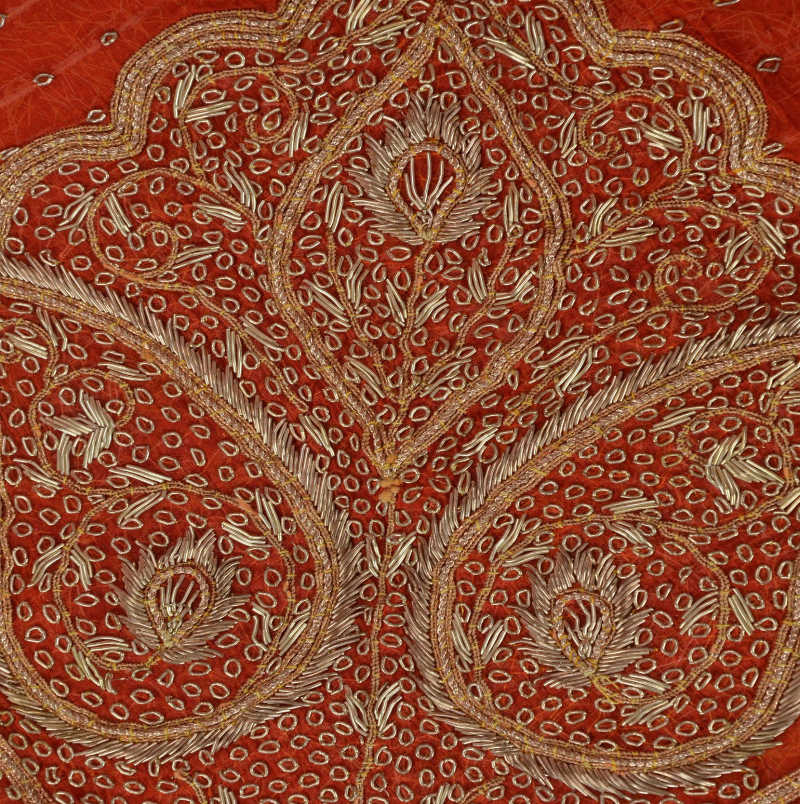===
0584,
3
===

=== |
 |
dehī ko nah kuchh pūchho ik bhart kā hai gaṛvā
tarkīb se kyā kahye sāñche meñ kī ḍhālī hai
1) don't ask anything about the body-- it is a single/particular/unique/excellent mixed-metal water-pot
2) by means of a construction/mixture/device-- what can one say?!-- it has been cast/shaped in a mold
dehī : 'Having a body, embodied, corporeal; of or belonging to the body; —a living creature or being, a man'. (Platts p.561)
bhart : 'A mixed metal composed of copper and lead'. (Platts p.185)
gaṛvā : 'A kind of water-pot; a narrow-mouthed vase or vessel with flowers in it (such a vase is carried about by musicians and dancing women at the feast of basant-panćamī as an offering to people of rank, from whom they receive presents)'. (Platts p.906)
tarkīb : 'Putting together, combining, mixing; setting (a stone); composition; compound; mixture; construction, structure, make, mechanism; form, fashion, mode, method, arrangement; means, plan, contrivance'. (Platts p.319)
ḍhālnā : 'To pour out ... ; to throw, cast; to cast (metal in fusion), to mould, fashion, form, shape'. (Platts p.570)
FWP:
SETS == EK
MOTIFS
NAMES
TERMS == FRESH WORD; INSHA'IYAH; THEMEHere's another example of how valuable it is to have commentary from an ustad like SRF. When I initially read the verse, I took dehī to mean simply 'body' or 'embodied person', the way Platts indeed presents it. This is a perfectly defensible reading, and yields a meditation on the mysteries of the Creator-- how God arranges for us to have such complex and capable bodies, like a skilful artisan who combines many kinds of metals into an elaborate special-purpose amalgam. The ik becomes particularly significant on this reading, since it offers us various ways to think about our alloyed, 'embodied' status.
But SRF supplies the view that in his own cultural region dehī is used for women's bodies, and in fact chiefly for those of adult women who move and work in the world. His explanation of gaṛvā too adds color and specificity to the idea of a long-necked water-pot. Both the sexual specificy of dehī , and the 'homey' [gharelū] nuances of gaṛvā , wonderfully enrich what might otherwise have looked like a rather pious and pedestrian verse. As SRF notes, the use of bhart kā gaṛvā deserves the greatest possible degree of 'fresh word' credit.
Note for grammar fans: The positioning of that kī in the second line looks to me very awkward. I asked SRF about it, and he replied (May 2017):
The kī is here a particle of categorization, where there are many things and you choose one of them. Like this:
mujhe botal meñ kī chāhiye, ghaṛe meñ kī nahīñ .
mujhe ghar kī chāhiye , bāzār kī nahīñ .
us kī tarkīb sāñche meñ kī ḍhālī hai , ghaṛī huʾī nahīñ .
I hope the matter is clear now.
Well, that helps somewhat in a general way. Certainly the kī , like the verb, must modify the feminine tarkīb . But I'm still not sure that I fully understand the idiomatic usage. Perhaps the idea is that the structure of her body is 'of a kind that' has been cast in a mold.